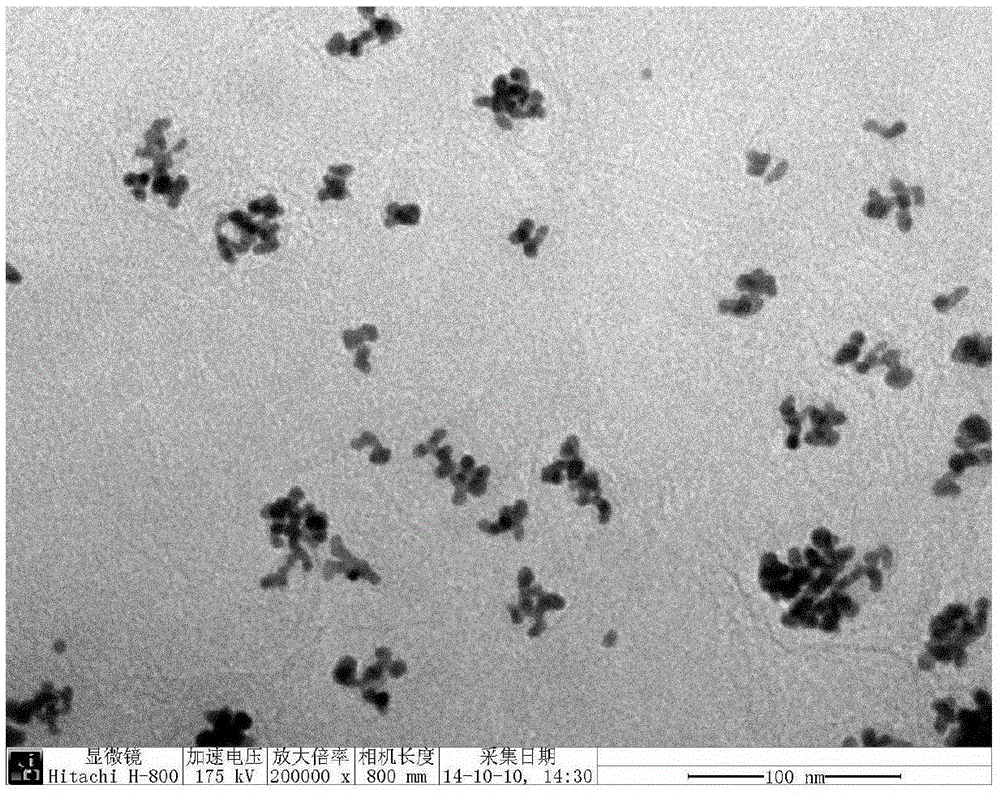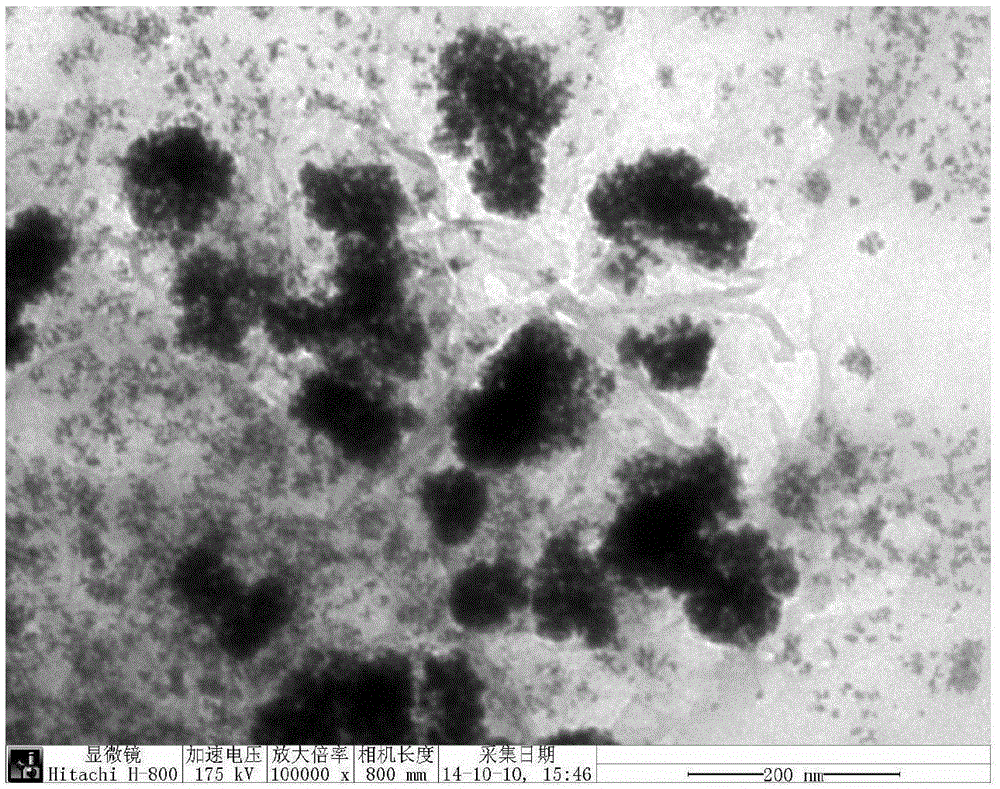Method for loading appearance-controllable bi-metal nano-composite material between two-dimensional laminar material and conductive polymer double carrier
A conductive polymer, bimetallic nanotechnology, applied in chemical instruments and methods, organic compound/hydride/coordination complex catalysts, physical/chemical process catalysts, etc., can solve the difficulty of catalyst morphology control and the stability of catalytic materials problems such as poor performance, low recycling efficiency, etc., to achieve the effect of facilitating the orientation of highly active morphology, controllable morphology, and saving economic costs
- Summary
- Abstract
- Description
- Claims
- Application Information
AI Technical Summary
Problems solved by technology
Method used
Image
Examples
Embodiment 1
[0028] During the preparation process, 5.0 mL of a solution containing chloroauric acid and chloroplatinic acid in a ratio of 1:1 according to the amount of substances was added to 20 mL of graphene oxide solution with a concentration of 1.5 mg / mL, and a uniform mixture was formed after stirring for 10 min. solution. Next, add 0.2mL aniline monomer into the system, and react for 5.0h under the condition of stirring. After the reaction, the product was centrifuged at 7000r / min for 10min, and washed three times with deionized water to remove unreacted aniline monomers in the system.
[0029] The TEM photo of the two-dimensional graphene oxide nanomaterial obtained in the present embodiment is as follows figure 1 shown. Depend on figure 2 It can be seen that the gold-platinum alloy nanomaterial obtained in this example is dendritic. Depend on Figure 4 It can be seen that without using a catalyst, methylene blue will not fade even after 4 hours of reaction; and after adding...
Embodiment 2
[0031] During the preparation process, add 1.0 mL of a solution containing chloroauric acid and chloroplatinic acid with a ratio of 2:1 according to the amount of substances to 20 mL of graphene oxide solution with a concentration of 1.5 mg / mL, stir for 10 min, and form a uniform solution. Next, add 0.05 mL of pyrrole monomer into the system, and react for 3.0 h under the condition of stirring. After the reaction, the product was centrifuged at 7000r / min for 10min, and washed 3 times with deionized water to remove unreacted pyrrole monomers in the system.
[0032] Depend on image 3 It can be seen that the gold-platinum alloy nanomaterials obtained in this example are in the form of porous clusters.
Embodiment 3
[0034] In the process of preparation, add 4.0mL to the graphene oxide solution that 20mL concentration is 1.5mg / mL and contain the solution of chloroauric acid, gold nitrate and chloroplatinic acid that are 2:1:1 according to the amount ratio of substance, Stir for 10 min to form a homogeneous solution. Next, add 0.1 mL of thiophene monomer into the system, and react for 4.0 h under stirring conditions. After the reaction, the product was centrifuged at 7000r / min for 10min, and washed 3 times with deionized water to remove unreacted thiophene monomers in the system.
PUM
 Login to View More
Login to View More Abstract
Description
Claims
Application Information
 Login to View More
Login to View More - R&D
- Intellectual Property
- Life Sciences
- Materials
- Tech Scout
- Unparalleled Data Quality
- Higher Quality Content
- 60% Fewer Hallucinations
Browse by: Latest US Patents, China's latest patents, Technical Efficacy Thesaurus, Application Domain, Technology Topic, Popular Technical Reports.
© 2025 PatSnap. All rights reserved.Legal|Privacy policy|Modern Slavery Act Transparency Statement|Sitemap|About US| Contact US: help@patsnap.com



